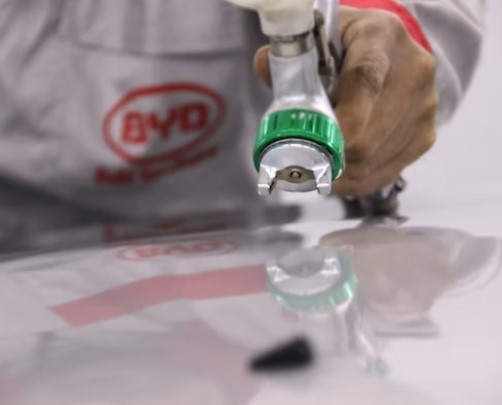A few types of work require preparation to ensure the best quality. For instance, when working on the car body, no matter how perfect your paint application is, it won’t be flawless if you don’t use the body prep. Even if you apply clear coat buffing later, you will still notice scratches and imperfections when the surface is dry.
However, another type of job is necessary for flawless results: seam sealing. This is a process when a professional applies automotive seam sealers. In the end, you get perfect results and ensure that your work is waterproof.
Keep reading the article to figure out what seam sealing is and why you need this process to get perfect results.
Understanding Automotive Seam Sealing
It’s the process of applying a specific material that seals all the seams of the car, making it water and dustproof. Typically, the materials are applied when warm, dispensed according to a complex method and left to dry. Once dry, the material hardens. Then the professional can use tools to ensure the seam can’t be felt to the touch.
Seam sealing keeps dust, dirt, water, and other small particles off the upper body of the car, its interior, and its exterior. The automotive seam sealer protects the car and details regardless of the environment and weather conditions. The best seam sealers are always waterproof. The seam sealing procedure requires a few products and tools you can check on Dealer Shop.
How Seam Sealing Works
Even though this procedure isn’t the most difficult one in the range of available services, it still requires a professional. There are many peculiarities to consider and understand how to apply the sealants to ensure prolonged effects.
Most inside seals are invisible since they are inside the vehicle. Thus, it’s not necessary to coat them. However, it’s critical to cover outside seals to prolong the lifespan of the car’s body. Thus, a professional also applies additional coats to ensure the quality of work.
What Materials are Used?
The list of typical materials includes:
- epoxies;
- expanding sealers;
- polyvinyl chloride (PVC).
It’s also worth mentioning that this process is rather tricky. It requires a dispenser to cover seams, but if the application is bad or messy, the seams won’t be properly sealed. As a result, a bad application may compromise the durability of the job.
Thus, it’s best to use quality equipment and materials and ask for help from a professional. Most car owners prefer using professional services as the job is too complicated and time-consuming when done without proper tools.
Benefits of Seam Sealing
Here are a few common benefits of the seam sealing process:
- Allows immediate water testing once dry.
- Saves time – no color matching of seals is necessary. The process requires a professional to apply the substance and color the surface. You won’t notice or feel any seals afterward.
- Seals for long periods and reduces comebacks.
- Protects from water, corrosion, picking up dust, and small particles.
Overall, seam sealing may not be on the list of necessary procedures, but it certainly prolongs the body paintwork. As a result, you won’t have to worry about corrosion or damage to car parts.
Should you opt for this type of service? It depends on a few factors:
- the typical weather conditions in the area where you live;
- how often do you have to paint the car body or cover it with a protective coat because of damage done when driving.
If you’re worried about corrosion because of the humidity or regular rains, you may consider opting for this type of service. It’s also a good idea to seal seams if you often drive in areas without proper roads.
Final Thoughts
Whether you’re an auto repair shop owner or a car enthusiast, one major thing to remember is the quality of the products you use. Seam sealing may not be the necessary procedure, but it prolongs the effects of the job done to a car. However, it’s critical to use quality materials and tools. You can check out DealerShop to find the best-certified equipment, materials, and tools to do a perfect seam sealing job.
Read more: Financing Vehicles in a Creative Way
